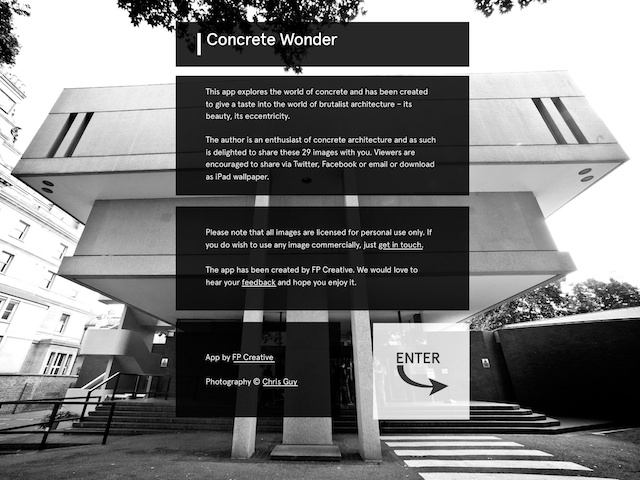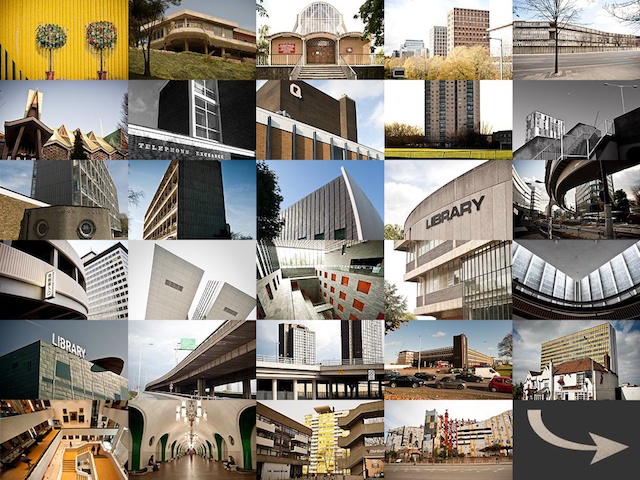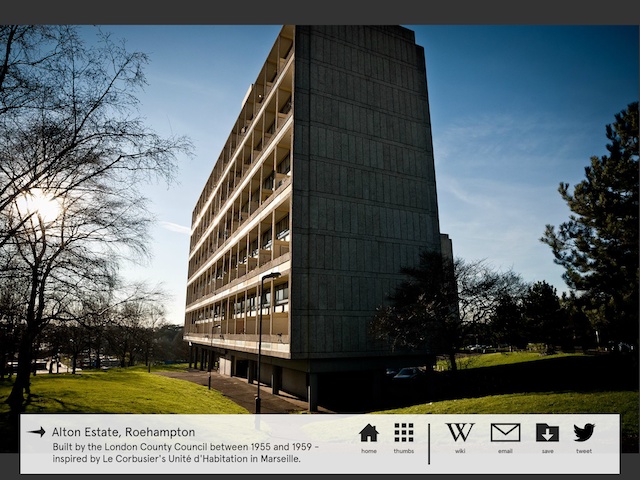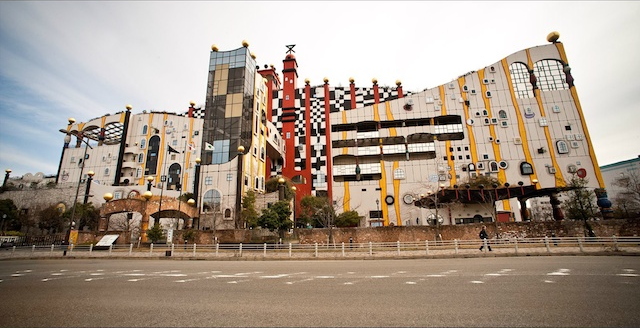Brutalist Architecture on the iPad

AMITIAE - Wednesday 20 March 2013
|
Brutalist Architecture on the iPad |
 |
|
|
By Graham K. Rogers

I earlier found an example of this was the app called, Ampersands: one man's look at the underrated character that used to be taught in some British schools as the 27th letter of the alphabet. Now, I have found an app that celebrates a type of architecture that I saw at close hand in Britain as I was growing up, but age seems to have mellowed: Brutalist Architecture.


The app only works in landscape mode. This does not show some of the images in the best way as several have been taken in portrait mode, so appear small in the app. Each image is displayed with a white strip at the bottom of the screen giving the location and bare details of the construction. Towards the right are controls for the app: a user may return to the app Home screen, or to the thumbnails page. To the right, icons allow an image to be exported via email or Twitter. An image may also be saved in the photo library. An icon marked Wiki opens Safari and links to the Wikipedia page related to the location. Tapping the image makes the white band disappear: the image can be viewed in full.

It is the context in which the buildings (and other constructions) are viewed that makes this app more worthwhile. Viewed alone, perhaps from a car or a bus, some of these buildings are drab. Parts of architectural London in the 1960s had an aura of drabness. Seen as a collection, the strength of the architectural movement does make more sense, and in some of the images we can see the beginnings of an evolution. This may be valuable to students of architecture or other related disciplines. There is also a historical/social context here. The overall impression of parts (say) of London, was of greyness; yet the application of colour, as may be seen in some of the images, along with the textures from the concrete mouldings, has a cumulative effect. I lived in such a tower block on the edge of London and when new the buildings looked exciting; I also remember concrete where the wood grain could be seen on the panels. As some of the comments in the app make clear, certain of the buildings displayed are now listed (protected), while a couple are now gone. Others, despite the classification of "Brutalist" are simply stunning.

Graham K. Rogers teaches at the Faculty of Engineering, Mahidol University in Thailand. He wrote in the Bangkok Post, Database supplement on IT subjects. For the last seven years of Database he wrote a column on Apple and Macs. |
|

For further information, e-mail to

|

|